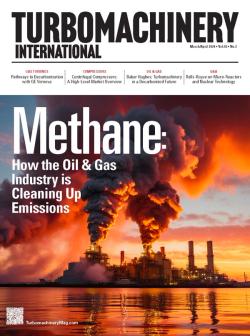
OR WAIT null SECS
© 2024 MJH Life Sciences™ and Turbomachinery Magazine. All rights reserved.
MYTH: DEVELOPMENT PATHS FOR NEXT-GENERATION POWER PLANTS (Part 1)
Over the last couple of years, researchers have published many papers addressing the need for increased efficiency from gas turbines (GTs) and combined cycle power plants (CCPPs). This discussion was primarily driven by greenhouse gas (GHG) emission reductions and improved utilization of limited hydrocarbon resources. Both topics have somewhat lost relevance due to: Advances in oil & gas production technologies that have made hydrocarbons abundant again; and GHG mitigation taking a political backseat. Nonetheless, it is worthwhile to review and analyze technology options for efficiency improvement alternatives and estimate their commercial viability.
Current state-of-the-art large utility scale CCPPs reach efficiencies slightly above 60% for favorable heat-sink cooling conditions. Government agencies and industry associations have stated a goal to improve this efficiency to 65% over the next 10 years. But keep in mind that we have seen diminishing efficiency gains over the last decade compared to previous development cycles. Between 1960 and 1970, simple cycle GT plant efficiency increased from about 18% to 32%. With the introduction and wide commercial acceptance of CCPPs between 1970 and 1985, efficiency jumped to approximately 55%. Subsequently, F-class plants had reached about 58% efficiency by 1995. Since then, improvements have been in the low single digits.
For example, the first GE Frame H CCPP started commercial operation in 2002 (Baglin Bay, UK) and achieved near 60% efficiency. After that, marginal improvements to around 61% have been realized by the newest G, H, and J class GT plants. In other words, the efficiency improvement is 1.5% at best for the past 15 years. Clearly, adding another 4% over the next 10 years is highly ambitious and not necessarily credible.
The current OEM approach for improved efficiency is through firing temperature and pressure ratio increases. Better materials, coatings and advanced blade cooling schemes are the main contributors. From a fundamental thermodynamic perspective, a Brayton cycle’s pressure ratio has the greatest impact on efficiency while firing temperature primarily drives output power. But both parameters are tightly related so both need to be raised to improve performance.
The physical relationships are slightly more complex in CCPPs since GT exhaust temperature and thus firing temperature have a strong impact on the efficiency of the bottoming steam Rankine cycle. Is faster and hotter the right answer? The latest generation of GTs operate at firing temperatures exceeding 2,800°F and require nearly 10% of the compressor flow for hot section cooling. Their hot section turbine blades are made from high-nickel alloys and use complex internal and external cooling and thermal barrier coatings to keep the base metal temperatures within allowable limits. Nonetheless, all modern GTs operate near their material cyclic stress failure and creep life limits. To obtain increased pressure ratios, higher blade speeds are necessary. To gain more power, higher firing temperatures are required.
Unfortunately, GTs with faster blade speeds, either through higher rotational shaft speeds or larger blade tip diameters and hotter combustion (for higher heat source temperatures), are fundamentally limited by current material technology options. And there is little indication that improvements in novel metal alloys will lead to drastically higher allowable metal temperatures and yield stresses in the near term. Hand calculations show that to arrive at 65% combined cycle efficiency using evolutionary steps from today’s industrial frame engine technology, GT firing temperature will have to be around 3,100°F, pressure ratio must be well above 25, and the hot section cooling flow requirements will have to be reduced to less than 6% of compressor flow.
To get there, we have seen some promising developments using ceramics and ceramic matrix blade materials. But most of these suffer from other physical property shortcomings, such as brittleness and lack of impact resistance. This makes them difficult to implement in GT components. Significant improvements have also been made in compressor and turbine aerodynamics using computational fluid dynamics to develop complex 3- D blade shapes. However, these improvements contributed far less to plant performance enhancements than the gradual increase of firing temperature and pressure ratio. Part II will appear in the next issue.


